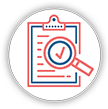
By Dr. Francine Bono-Neri, PhD, RN, APRN, PNP
Nursing education is incredibly taxing for students and us as educators. The massive amount of content our students are responsible for is already quite challenging for us to manage.
Yet, what other topics are essential and necessary in the practice that we do not cover or touch upon? Inconsistently taught in prelicensure RN education, human trafficking (HT) content, and anti-trafficking measures are vital to our future (and current) nursing colleagues.
Some of you reading this may not even fully know what HT is or recognize its profound intersection in the healthcare sector, illustrating one of the obstacles to its integration in prelicensure RN education. Please allow me to elaborate.
My Story
Why did I become active to be a voice for those victimized by human trafficking? It was the day I realized I had failed as a mandated reporter of a 16-year-old client whom I had NO idea was being trafficked. I didn’t know what HT was after 28 years of clinical practice, no less how to identify it in the clinical setting. Not a day goes by that I do not think about the client I failed.
After reading my experience, some of you will also recognize you failed, but please know it is not your fault. You just needed to be informed, just as I was not. I implore you to let my experience be the catalyst of needed change.
Here is my story.
As a peds clinical instructor in 2018, I took prelicensure RN nursing students to the clinical site for their pediatric rotation.
The facility was a large, level-one trauma center that was a teaching hospital. I was on the floor with my students when we got the call from the ED about a 16-year-old female being admitted for IV antibiotic therapy to treat rampant cellulitis in the left arm.
Assigning one of my students to assist the primary nurse with the admission and pulling in two other students who were not busy, the four of us went in to help with the admission process.
Walking into the room with my three students, I saw the 16-year-old client in bed. It took everything inside of me to fight back the tears. She was in such a wrong way. She had lice, numerous intertriginous infections, was covered in IV drug marks, and her urine was positive for multiple illicit substances.
I noted the self-induced cutting/mutilation marks to her wrists from her attempt to take her life the prior year. In addition, an older gentleman was sitting in the guest recliner. He was the complete opposite of this 16-year-old.
He was well-dressed, clean-cut, well-spoken, and at least twice her age. “Who is he? How does he know her?” were the questions running through my mind. I knew something was wrong but didn’t know what it was.
Very professionally, I approached him and asked if he would describe the nature of his relationship with her, as we needed this admission information. He responded kindly, “She’s just a really good friend, and I’m worried about her.” I knew he wasn’t being honest, but I went no further than to thank him for his reply.
Fast-forwarding to June of 2019, I was in Washington, DC, for the Membership Assembly for the American Nurses Association, as I was serving on the BOD for ANA-NY.
One of the selected presenters, Ms. Tammy Toney-Butler, RN, CEN, CPEN, SANE, began speaking on human trafficking: the red flags, clinical presentation, physical findings, an older significant other who won’t leave the room, etc.
I felt like an 18-wheeler hit me during that presentation because I saw that 16-year-old client in front of me.
How on earth did I not know about this? How many others had I missed?
Very fortuitously, I ran into Ms. Toney-Butler in the lobby after her presentation. I told her of that 16-year-old girl. Very matter-of-factly, she turned to me and said, “She absolutely was being trafficked, and her trafficker was sitting right there.”
That moment catalyzed our movement and the birth of our professional association, Nurses United Against Human Trafficking, PA.
Human trafficking is a growing problem globally and in the US with 80% of victims coming to healthcare settings during the time they are being trafficked. However, the curriculum in most nursing programs is not preparing nurses to notice trafficking red flags to respond appropriately.
Human Trafficking Red Flags
Victims of human trafficking are the most vulnerable in our population. The following red flags can stand alone as concerning, but when clustered with 2-3 heighten the suspicion for HT.
Those most vulnerable that can be exploited include:
- Patients with current substance use/abuse
- Homeless or “couch surfing”
- Runaway youth
- Indiginous ethnic groups. Are considered more “marketable” to traffickers
- Those in the juvenile justice system or child welfare system
- Mentally disabled or those in group homes
Here is a concise list of problems/cues to notice that are most commonly associated with HT victims, so you can respond appropriately:
- Suicidal
- Overdose/substance use is common in victims as coping mechanism or using addiction to control victim.
- STI/STD, especially if repeated diagnosis
- Ectopic pregnancy, multiple abortions
- Infants with neonatal abstinence syndrome
- Nonfatal strangulation
- Intimate partner violence/signs of abuse-multiple bruises in various stages of healing. Most do not see self as victim and do not disclose.
- Multiple cell phones/multiple keys (hotel rooms)
- No ID if appropriate age
- Tattoos of crowns, $ symbol, profane language. Traffickers will brand their victims with these common symbols.
- Controlling/dominant person with patient who is reluctant to leave. Parents can also be traffickers.
If you suspect trafficking, here is how you want to respond:
- Separate the suspected trafficker from the patient. Do what is needed to get them out of the room to ensure safety of the patient.
- Make sure cell phone of patient turned off of patient. Traffickers try to listen.
- Do not speak negatively towards suspected trafficker. Will not build trust.
- If minor, mandatory reporting of concern.
How Nurses Can Make a Difference
As nursing school curricula continue to evolve based on advances in evidence-based practice, incorporating non-NCLEX test content in nursing school is essential. If omitted, imagine what the outcomes could be in practice?
As it pertains to HT content, we are missing an entire population. Additionally, anyone under 18 involved in a commercial sex act falls under mandatory reporting guidelines, as force, fraud, or coercion do not need to be proven.
It is human trafficking; it is a crime, and ultimately, that HCP is failing as a mandated reporter, just like all of us did at that facility in 2018. As nurses and healthcare professionals, it is our ethical duty to become informed and ensure that our colleagues are also properly informed.
There are over 4 million nurses currently employed in the US. We are ideally situated to identify, treat, respond, empower, and mandatorily report in cases involving minors, but only if we are adequately educated (Bono-Neri & Toney-Butler, 2023).
Continuous reinforcement of HT content should be required for professional development and part of the licensure renewal requirement in all US States, not just the ten states currently mandated (Jones Day, 2022).
Not only does this stop the cycle of further victimization for that identified individual, but it prevents other victims from falling prey to that trafficker, as gangs and cartels can be dismantled.
Have you seen any of these red flags in patients you have cared for who may have been trafficked?
How do you discuss human trafficking in your curriculum to empower students to notice and respond appropriately once in practice?
- Become comprehensively educated on HT and raise awareness to the magnitude and pervasiveness of these crimes. Review the video discussion with Dr. Bono-Neri below or go to the NUAHT website as your next step. Share what you learned with your students and colleagues.
- Read Dr. Bono-Neri’s journal article (2023): Nursing students’ knowledge of and exposure to human trafficking content in undergraduate curricula
- Integrate essential content such as noticing the red flags of HT to respond appropriately as a topic in your clinical post-conference.
- Integrate essential content such as nursing assessment, peds, OB, and mental health/substance abuse.
- Advocate for integration of HT content into the curriculum so it will be addressed to better prepare graduates for practice.
Go to the source and prevent…
- Get involved in helping to shape or support policies/legislation on local, state, and federal levels.
- Support health policies that work to prevent the factors that lead to trafficking, including poverty, addiction, and homelessness.
Closing Thoughts
Nurses play a critical role in identifying, assisting, and advocating for victims of HT. Unfortunately, this population of victims too often remains unrecognized due to HCPs’ lack of education on HT.
Undergraduate nursing programs are uniquely positioned to address this problem by educating nursing students on HT, yielding improved abilities to identify and care for this population.
Unlike an illicit drug or arms trade that, once sold, is gone, humans can be sold repeatedly, leading to significant physical ailments and complex trauma. These victims must be promptly identified and treated appropriately with trauma-informed care, but without proper education of HCPs, these victims will remain unidentified.
Nurses are positioned to intervene and make a difference if they are educated to notice, then interpret cues to respond appropriately. if the curriculum in your program is silent, take initiative to integrate what you have learned in this article to empower your students to identify signs of HT to prepare them for practice.
References
- Bono-Neri, F., & Toney-Butler, T. J. (2023). Nursing students’ knowledge of and exposure to human trafficking content in undergraduate curricula. Nurse Education Today, 129, p. 1- 8. https://doi.org/10.1016/j.nedt.2023.105920
- Hilton, C. (2019, July 29). Human Trafficking Fast Facts. https://www.globalgiving.org/learn/human-trafficking-fast-facts
- International Labour Organization. (2022, September 12). 50 million people worldwide in modern slavery. https://www.ilo.org/global/about-the-ilo/newsroom/news/WCMS_855019/lang–en/index.htm
- Jones Day. (2022, July). Human trafficking and health care providers: Legal requirements for reporting and education. https://www.jonesday.com/-/media/files/publications/2021/09/2022-50-state-survey–ht-state-reporting-chart-final.pdf?la=en&hash=2FA40972B1EC477FB46CDE1A8D07359C
- Lederer, L. J. & Wetzel, C. A. (2014). The health consequences of sex trafficking and their implications for identifying victims in healthcare facilities. Annals of Health Law, 23(1), 61–91. Office on Trafficking In Persons. (2020).
- What is human trafficking? https://www.acf.hhs.gov/otip/about/what-human-trafficking
- Peck, J. L, & Doiron, M. L. (2022). Human trafficking policies of professional nursing organizations: Opportunity for innovative and influential policy voice. Nurs Forum, 57, 968‐976. https://doi.org/10.1111/nuf.12752
- Trafficking Victims Protection Act, 22 USCA § 7102(4) (2000).S. Department of Justice. (2022, January 13). Human Trafficking. https://www.justice.gov/humantrafficking
- The White House. (2021, December). The national action plan to combat human trafficking. https://www.whitehouse.gov/wp-content/uploads/2021/12/National-Action-Plan-to-Combat-Human-Trafficking.pdf
Dr. Francine Bono-Neri, PhD, RN, APRN, PNP is a pediatric nurse practitioner, academic nurse educator, researcher, published author, invited speaker, health policy advocate, and nurse leader. She served on the Board Of Directors for ANA-New York, and for the Long Island Chapter of NAPNAP. She was inducted as an Associate Member into the New York Academy of Medicine, and as a Nurse Leader into Sigma Theta Tau International.
Dr. Bono-Neri is the recipient of a prestigious NEF Scholarship, and was awarded a Legislature Citation for her extraordinary efforts in serving her former hometown community and she is the Co-founder and President of Nurses United Against Human Trafficking, P.A., a professional association created for the sole purpose of abolishing modern slavery by educating, equipping, and empowering healthcare professionals on anti-trafficking measures.
Questions? Contact her at: fbononeri@gmail.com
The Ultimate Solution to Develop Clinical Judgment Skills
KeithRN’s Think Like a Nurse Membership
Access exclusive active learning resources for faculty and students, including KeithRN Case Studies, making it your go-to resource.






